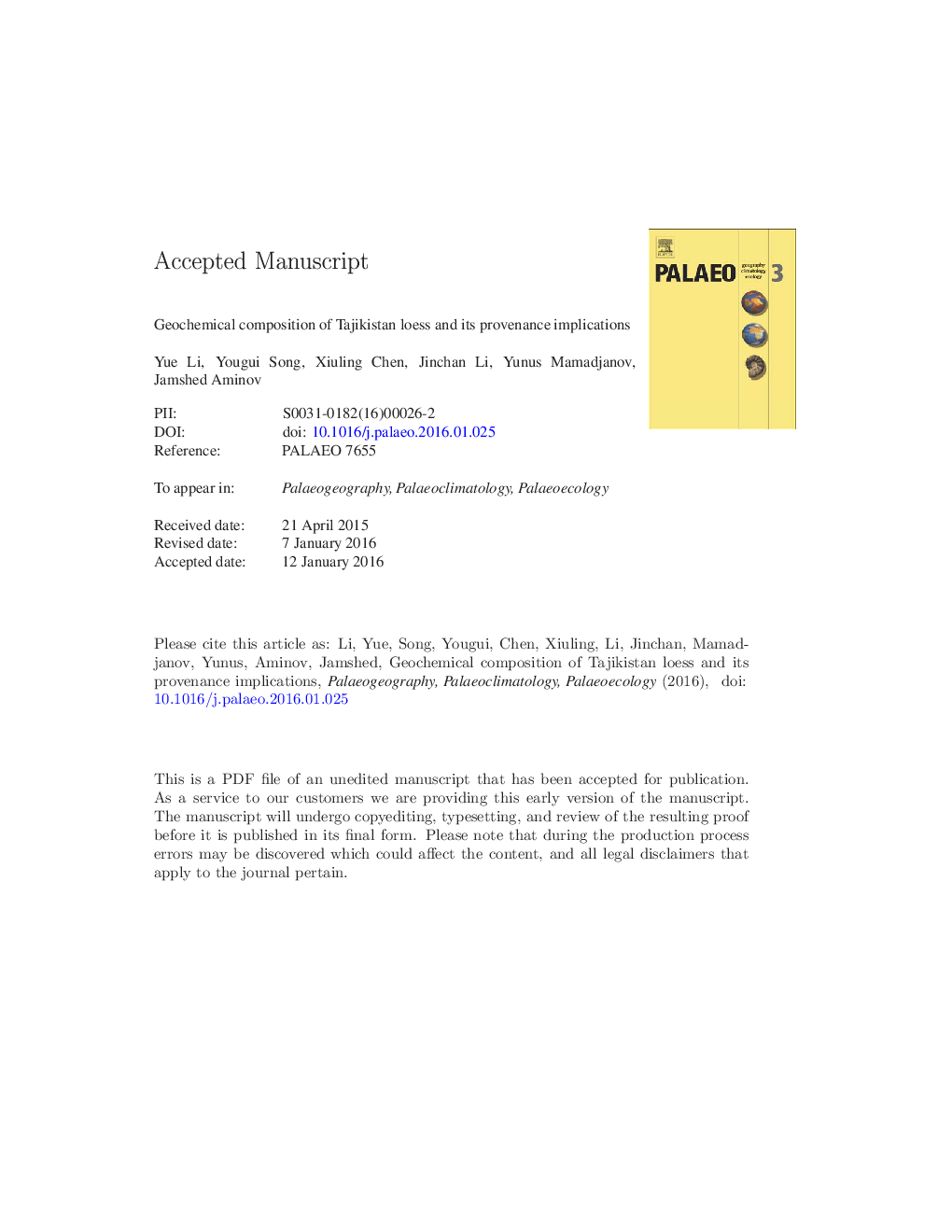| Article ID | Journal | Published Year | Pages | File Type |
|---|---|---|---|---|
| 6349428 | Palaeogeography, Palaeoclimatology, Palaeoecology | 2016 | 40 Pages |
Abstract
The Tajikistan (TJ) loess has great significance for the study of Quaternary climate changes and dust source in Central Asia. In this paper, we investigate the geochemical composition and provenance of loess. Our results show that the major elements, in order from high to low average content, are SiO2 > Al2O3 > CaO > Fe2O3 > MgO > K2O > Na2O > TiO2 > P2O5 > MnO. Fe, Ti, P and Mn contents in loess are similar to those in the UCC, as is the case with Si, Al and Mg contents in paleosols. Ca is distinctly enriched in loess, and Si, Al and K are depleted. Na is depleted in both loess and paleosols, and P is depleted only in paleosols. In contrast to the UCC, paleosols show enrichments in all trace elements except for Ba, Sr and Zr, but in loess, some trace elements (e.g., Ba, Co, Ni and Zr) show depletion. The CIA value of TJ loess is lower than that of Kashmir loess, the latter being influenced by differences in the sorting and tectonic environment. There are no great changes about provenance during the formation of TJ loess, and the deposit areas have a shorter distance to the provenance. Geochemical data and atmospheric circulations demonstrate that the TJ loess was mainly transported by the near-surface northerly or northwesterly winds, but there may be an additional and local source making a certain contribution to the formation of loess deposits in the south of Tianshan.
Related Topics
Physical Sciences and Engineering
Earth and Planetary Sciences
Earth-Surface Processes
Authors
Yue Li, Yougui Song, Xiuling Chen, Jinchan Li, Yunus Mamadjanov, Jamshed Aminov,
